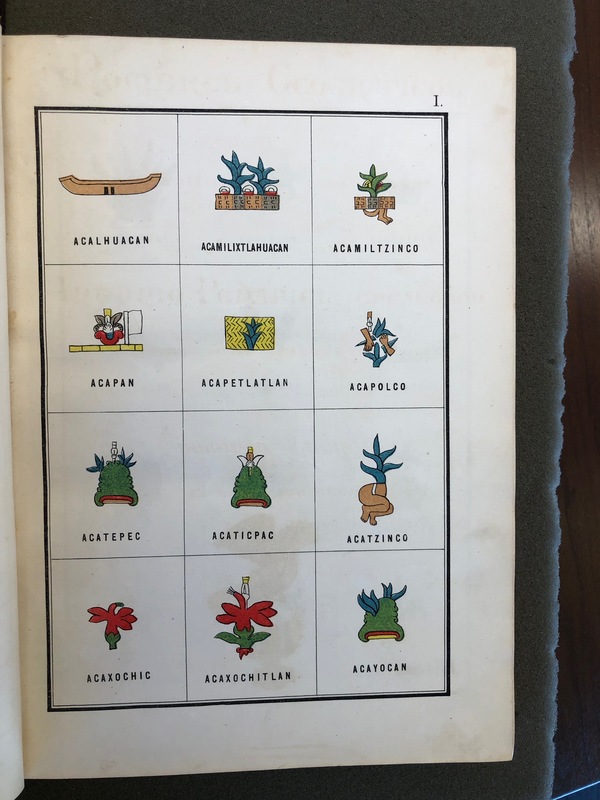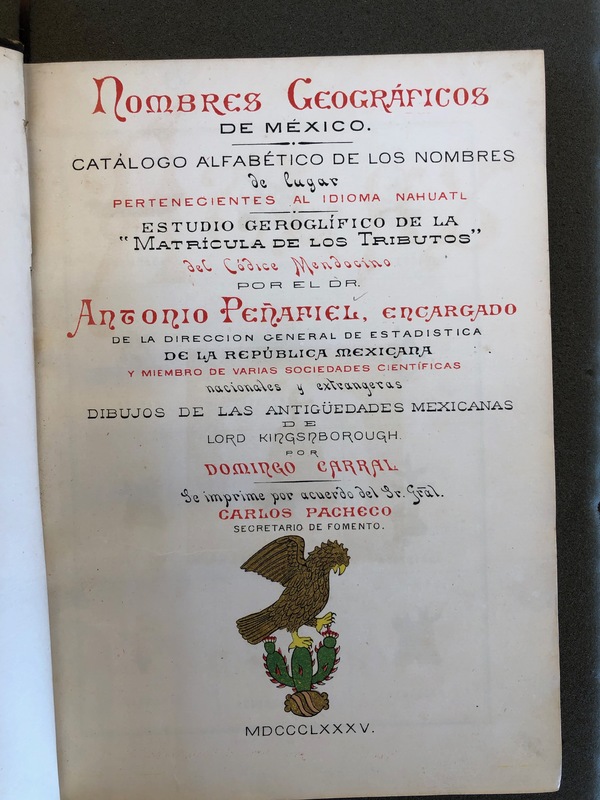Nombres Geograficos De Mexico: Nombres de Lugar Al Idioma Nahuatl
Nombres Geografico de Mexico (Geographical Names of Mexico) was published in Mexico in 1885. It is an alphabetical catalog of places in Nahuatl hieroglyphics. The book begins with the display of alphabetized Nahuatl hieroglyphics and the last section contains Nahuatl hieroglyphics paired with their proper pronunciation and the Spanish translation of the Nahuatl icon. The hieroglyphics pictured in this book come from the Codex Mendoza. The Codex Mendoza contains the history of Aztec rulers, conquests, places, and the lives of Aztec people. Circa 1830s-1848, Lord Kingsborough commissioned a facsimile edition of the Codex, which formed the basis of the 1885 Nombres Geograficos de Mexico.
This book helps to preserve Mexico’s rich history and to reanalyze Mexico’s future. Mexico's past was used by the state for the purpose of generating money and creating a sentiment of nationalism at home, but it was also used to showcase Mexico's impressive history to foreign nations, with the intent of eradicating the notion of Mexico being a barbarian nation.[1] This national ideology of preservation and looking towards the future provides foresight to the political ideology—“indigenismo”—that was present in Mexico after the 1920s. “Indigenismo” was a political movement that the Mexican state utilized to show a connection between Mexico as a nation and its indigenous heritage.
This book helped to construct a sense of national identity and pride. However, it should be understood that this text provoked not only a sense of national pride as a relic of the past, but it also engaged a national scientific study of the past for the purpose of education and emitting formal knowledge of Mexico’s indigenous heritage. This book showcases how Mexico’s heritage was organized by political and educational incentives to record history.
Due to the book’s systematic layout and relatively dry subject material, I would infer that this book’s readership was ordinary people. Because of the careful and fancy production, it can be inferred that this book was utilized by government officials and or academics and educators. The book is not written on and the pages are in good condition which alludes to the idea that individuals did not heavily engage with the book.
--Morgan Mitchell

